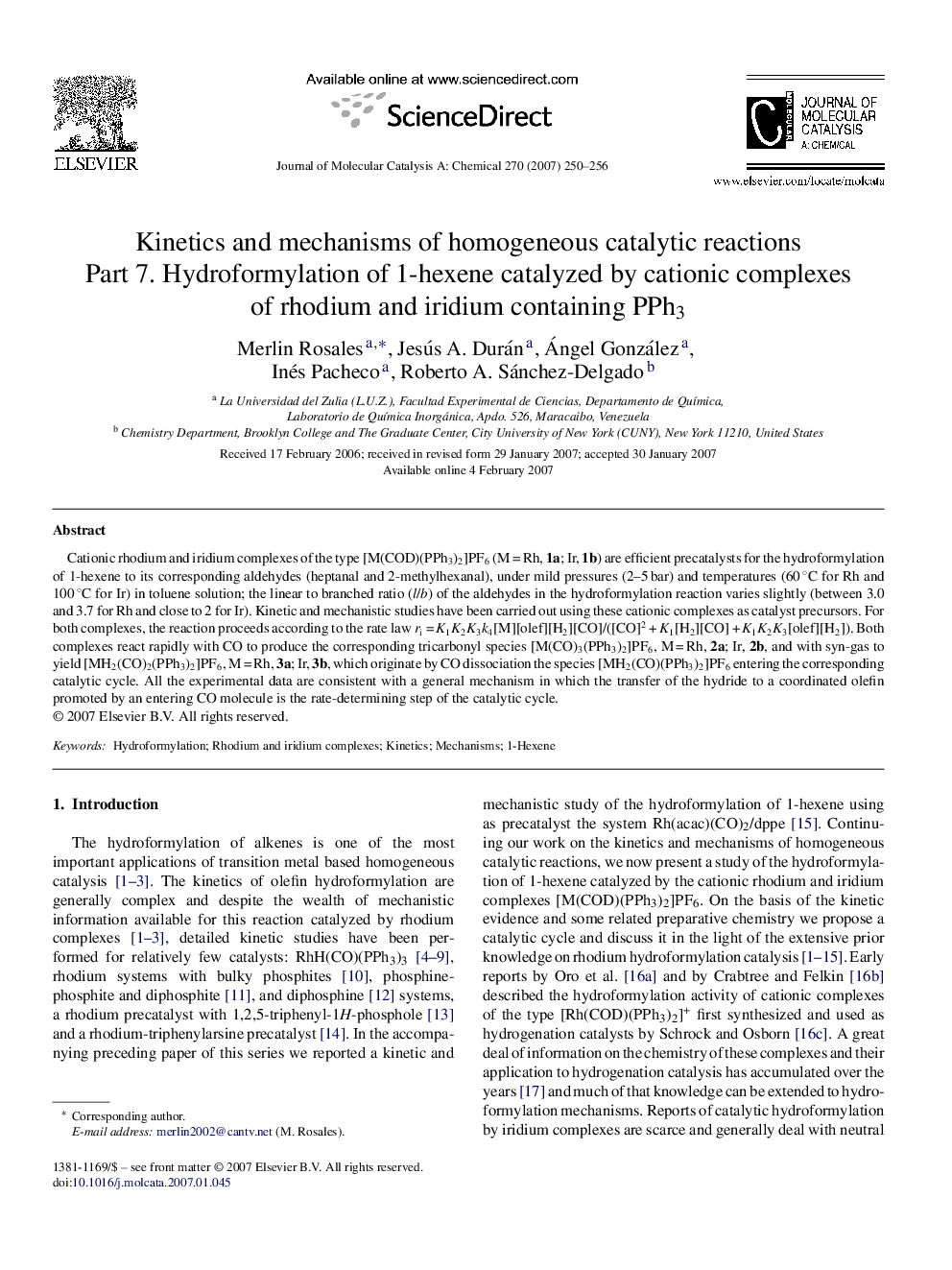| Article ID | Journal | Published Year | Pages | File Type |
|---|---|---|---|---|
| 68046 | Journal of Molecular Catalysis A: Chemical | 2007 | 7 Pages |
Cationic rhodium and iridium complexes of the type [M(COD)(PPh3)2]PF6 (M = Rh, 1a; Ir, 1b) are efficient precatalysts for the hydroformylation of 1-hexene to its corresponding aldehydes (heptanal and 2-methylhexanal), under mild pressures (2–5 bar) and temperatures (60 °C for Rh and 100 °C for Ir) in toluene solution; the linear to branched ratio (l/b) of the aldehydes in the hydroformylation reaction varies slightly (between 3.0 and 3.7 for Rh and close to 2 for Ir). Kinetic and mechanistic studies have been carried out using these cationic complexes as catalyst precursors. For both complexes, the reaction proceeds according to the rate law ri = K1K2K3k4[M][olef][H2][CO]/([CO]2 + K1[H2][CO] + K1K2K3[olef][H2]). Both complexes react rapidly with CO to produce the corresponding tricarbonyl species [M(CO)3(PPh3)2]PF6, M = Rh, 2a; Ir, 2b, and with syn-gas to yield [MH2(CO)2(PPh3)2]PF6, M = Rh, 3a; Ir, 3b, which originate by CO dissociation the species [MH2(CO)(PPh3)2]PF6 entering the corresponding catalytic cycle. All the experimental data are consistent with a general mechanism in which the transfer of the hydride to a coordinated olefin promoted by an entering CO molecule is the rate-determining step of the catalytic cycle.
Graphical abstractThe kinetics and mechanism of 1-hexene hydroformylation were studied using [M(COD)(PPh3)2]PF6, M = Rh, Ir as catalyst precursors at 60–100 °C, 2–5 atm H2/CO in toluene. For both complexes, the reaction proceeds according to the rate law ri = K1K2K3[M][olef][H2][CO]/([CO]2 + K1[H2][CO] + K1K2[olef][H2]) and a catalytic cycle is proposed involving hydride transfer to the alkene as the rds.Figure optionsDownload full-size imageDownload as PowerPoint slide
